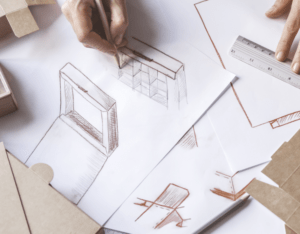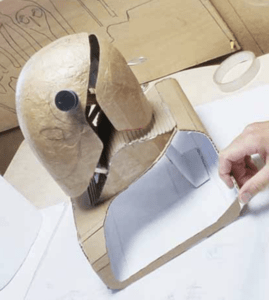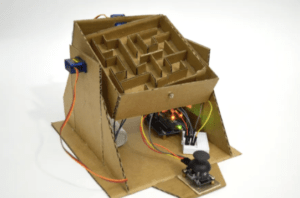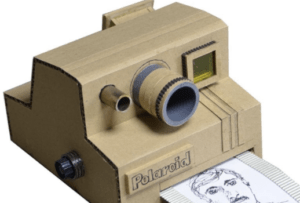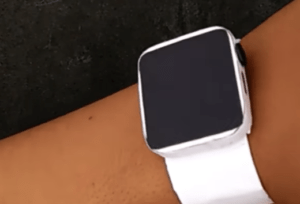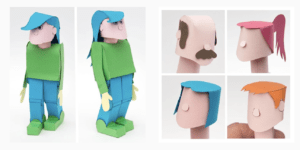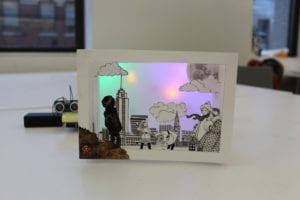Prototyping Guidebook
Table of Contents
| 1. Basic tools |
| 2. Sketching |
| 3. Materials and techniques |
| 4. Hacking objects |
| 5. Iterative design process |
| 6. Other resources |
1.Basic Tools
No matter what techniques or materials you will be using, you are going to need a basic set of inexpensive tools that will allow you to free your creativity. Here is a list of the most common, useful, and accessible ones:
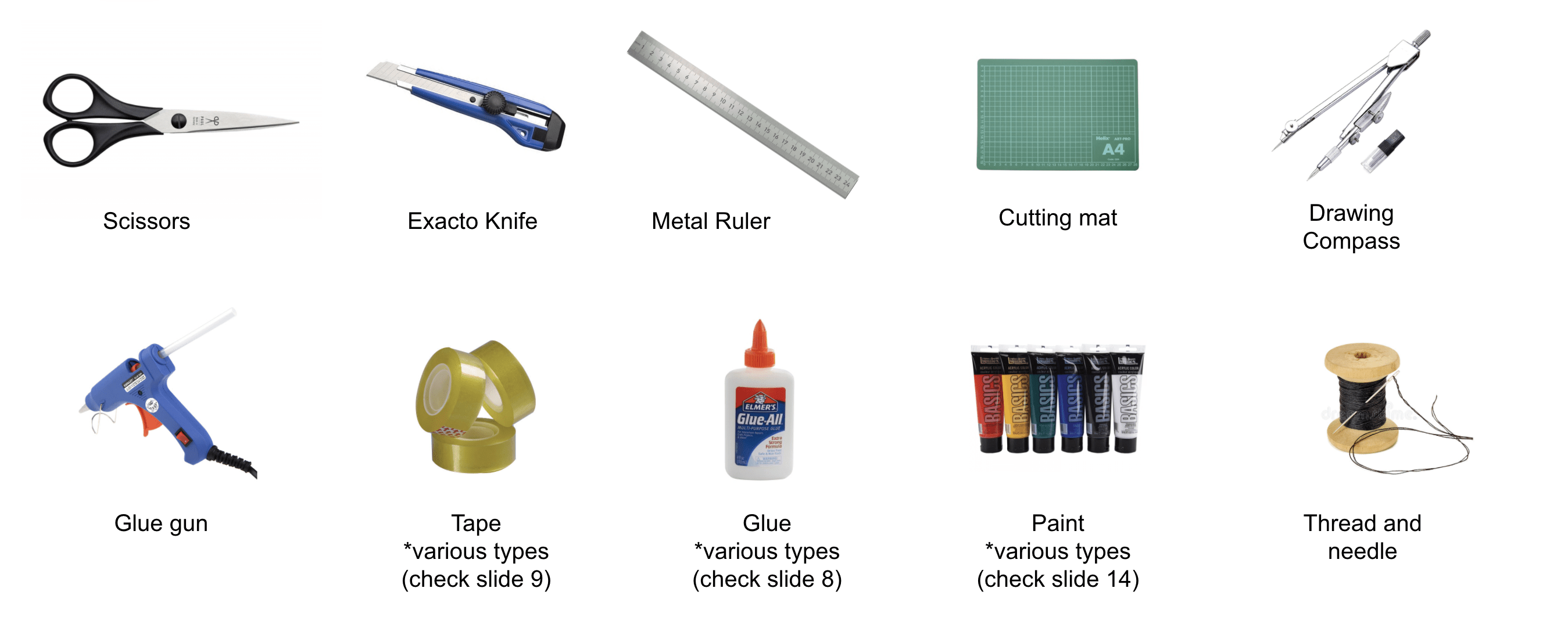
2. Sketching
When design, it is usually a good practice to start with some basic sketches. The reason why is because it is faster to iterate on paper and figure out roughly what you want to do. (although it might change a lot later but that’s okay.)
Spend 10-15 min sketching the physical parts of your prototype.
*Your drawings don’t need to be beautiful, they just need to help you visualize your next steps. Try first drawing in 2D and then in 3D perspective.
3. Materials and techniques
Now that you have a rough idea of what your design looks like it is time to start prototyping!
In this section, we will cover a multitude of materials and techniques that you can apply at home. You will need to decide which ones are most appropriate for you.
3.1 Cardboard
One of the most versatile and easy to find materials is cardboard. Try to find some old packaging inside your house or have a walk around your block to start creating!
Have a look at this video from Quirky design studio to see their prototyping workflow and process.
3.1a Cardboard cutting & joints
- Building with Cardboard – a guide to building solid structures with cardboard, from the Adaptive Design Association.
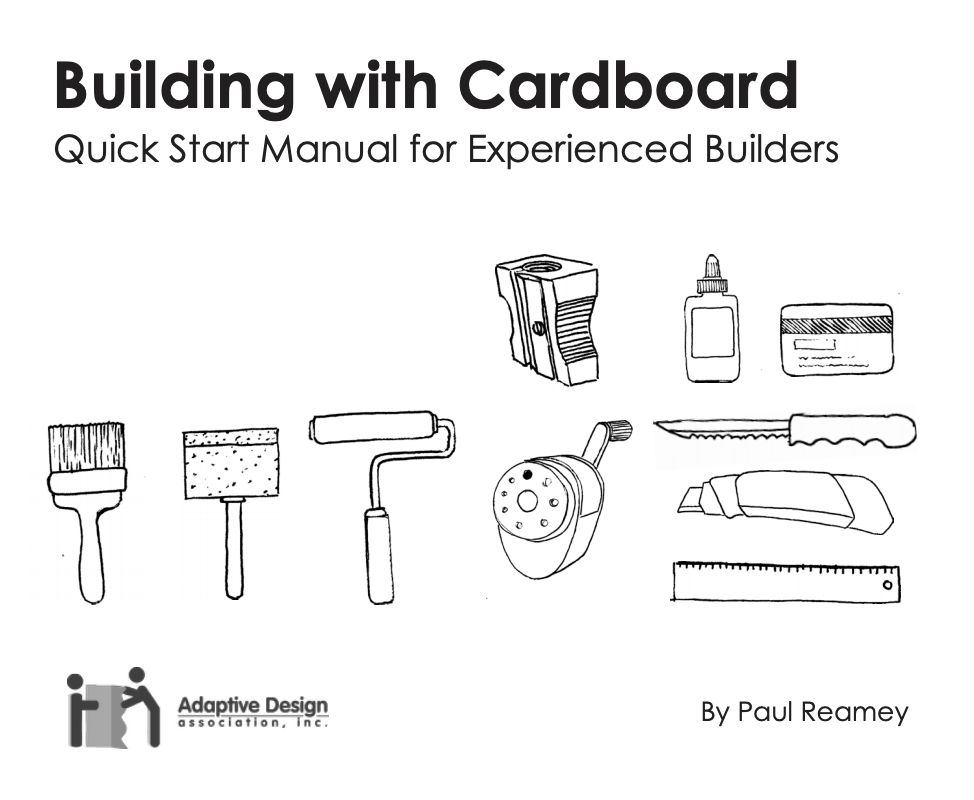
- The Art of Cardboard – another guide to cardboard construction (can we check if our library has this book?
- CardBoard Basics Tutorial Guide Chip/Matte Board model making: modeling for Designers & Architects
- CardBoard Advanced Basics Tutorial guide for model making: modeling for Designers & Architects
- Cardboard Modeling: Exploring, Experiencing, and Communicating by Joep Frens, includes some very detailed models made in foam-core and cardboard, proof that it’s possible to high-fidelity modeling in paper and cardboard.
3.1b cardboard glues

3.1c cardboard tapes
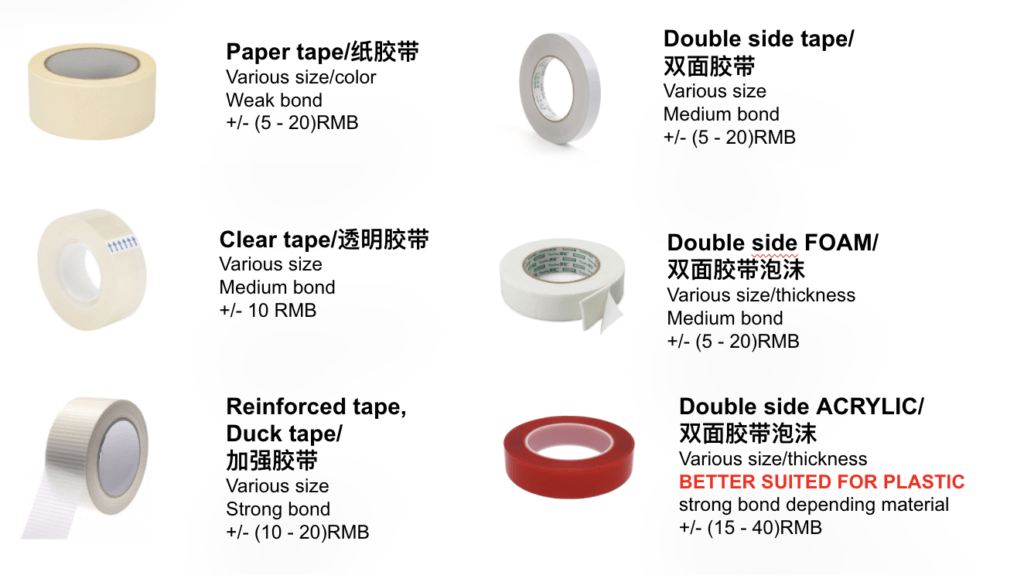
3.1d cardboard examples
3.2 Paper
Another very versatile and accessible material is paper, it can be used to wrap and embellish an existing part, folded into intricate shapes thanks to the art of Origami, or blended together with water and glue to make Papier-mâché.
*You can use the same glue and tapes for paper as for cardboard.
3.2a paper folding
- Template maker: Customized and print templates to create various shapes and boxes
- Origami.me: Large database of origami instructions. Find diagrams, crease patterns, and video tutorials.
- Paper Models of Polyhedra: On this site are a few hundred 3D paper models available for free.
- All free papercraft: This site features a wide variety of free printables, card-making ideas, paper quilling projects, and more. Check out the categories: origami, tips and techniques, papier-mache …
3.2b Paper (Papier-mâché)
Papier-mâché literally “chewed paper”, is a composite material consisting of paper pieces or pulp, reinforced with textiles and bound with an adhesive, such as glue, starch.
Check this video to follow an easy DIY recipe.
3.2c Paper clay
Paper clay is a cheap, handy sculpting material made from paper(or toilet paper), glue, and a few other hardware store supplies. Paper clay only takes about five minutes to make, and it air-dries into a hard, detailed surface you can paint.
Check this video to follow an easy DIY recipe.
3.1d Paper examples
3.3 Plastic
Collect the plastic waste from your home: plastic bags, bottles, plastic containers, plastic cutlery, etc. Those are super useful to repurpose and combine into various different shapes.
Just use scissors or a utility knife and join using hot glue and tape.
3.3a bottle recycling
Plastic bottles come in all forms and shapes and you can cut them very easily.
This video shows many possible utility applications just using plastic bottles. Get inspired and find a way to use bottles for your artistic project.
3.3b Fusing plastic bags
Plastic bags are something that we all have lying around. Most of these bags can be recycled.
Check this video to follow easy DIY methods or the Instructables page.
3.3c Bending Plastic with heat
You most likely have a hairdryer at home. You can use it to warm up a thin sheet of plastic and bend it or reshape it.
Be aware that this technique works better on certain plastic, recommend using HDPE which is a low melting temperature and nontoxic.
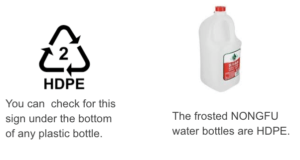
3.4 Other
Hand sewing and Hand stitching
Learn some simple techniques using a needle and some thread to be able to join any type of fabric available at your house, paper, or even plastic (fused plastic bags).
Types of paint
Read this article and understand which paints are the most suitable depending on the material you are painting on.
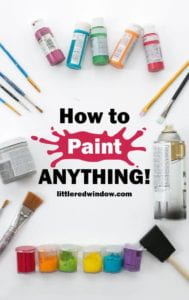
4. Hacking objects
Sometimes what you want to create is very similar to an existing product, depending on its cost and availability, you could check in your basement or purchase it from Taobao, modify it and repurpose it for your own intent. We call that hacking objects.
Bending hangers
Check your wardrobe for some spare hangers and use your imagination to bend it into different shapes and structures.
There is a nice option for a sturdy base model.
Polymorph – Moldable plastic
Heat in hot water, mold, and use within minutes. Reheat to remold again and again. Create custom grips, mounts, brackets, connectors and much more.
Off the shelf hacking
Two stools converted into kid’s bicycles. Similar to this example, products from IKEA, Taobao or amazon can be hacked into a myriad of other products.
Samuel Bernier & Andreas Bhend – IKEA hack
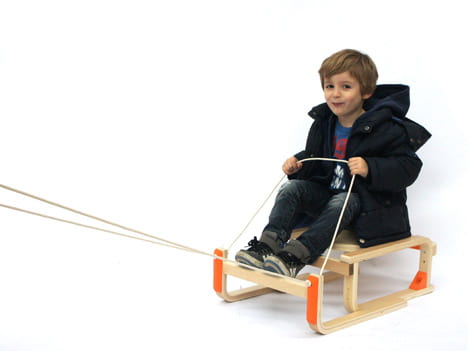
5. Iterative design process
“Rapid prototyping frees practitioners to embrace failure as a means of learning–learning about the shortcomings of the mock product and making changes. You don’t get things right the first time, innovative breakthroughs arise from failure.”
“Fail fast and often, then go back to the drawing board and make improvements where you failed. Prototypes go through multiple iterations where feedback from users is incorporated and changes are made to come up with an effective final solution.”
From article: Prototyping in Design Thinking: Fail Fast, Fail Often
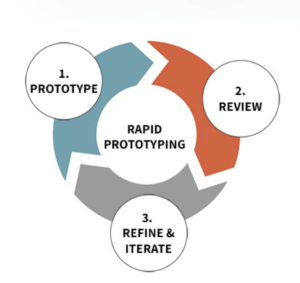
6. other resources
Cardboard techniques
https://www.youtube.com/user/JudePullen/videos
Instructables Cardboard Projects
https://www.instructables.com/craft/cardboard/projects/popular/
Instructables Craft
https://www.instructables.com/craft/
Arduino community projects
https://create.arduino.cc/projecthub
Cardboard Cosplay templates
Mekanizmalar.com – a great series of animations illustrating different mechanisms.
